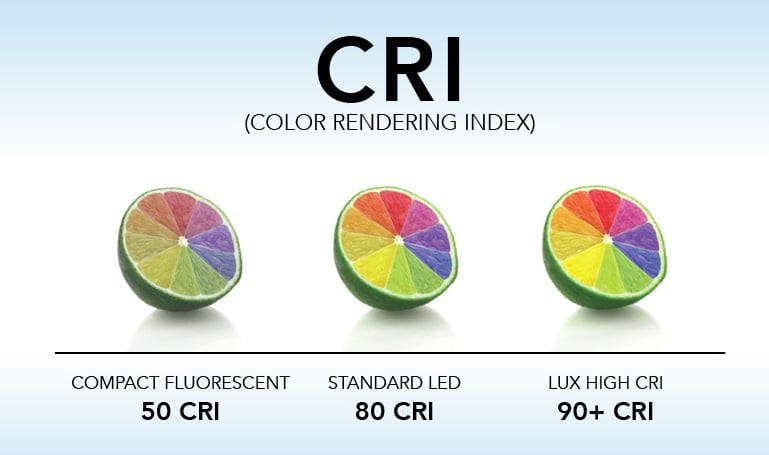Unravelling the Mystery: What Does CRI Score Mean?
In the world of lighting, there are many terms and acronyms that can leave you feeling confused. One such term is CRI, which stands for Colour Rendering Index. But what does CRI score mean? How does it affect your lighting choices? And how can you use this information to make better decisions about your lighting needs? This blog post aims to answer these questions and more.
Understanding CRI Score
The Colour Rendering Index (CRI) is a quantitative measure of a light source’s ability to reveal the colours of various objects faithfully in comparison with an ideal or natural light source. In simpler terms, it’s a rating system that determines how accurately a given light source can reproduce the colour of objects when compared to sunlight.
The CRI score ranges from 0 to 100, with 100 indicating that the light source is identical to natural sunlight in its colour rendering capabilities. A higher CRI score means that the light source will render colours more accurately and vividly. Conversely, a lower score means that colours may appear distorted or unnatural under that particular light.
Why is CRI Score Important?
When choosing lighting for your home, office, or any other space, you might primarily consider factors like brightness (measured in lumens), energy efficiency, or lifespan. While these are undoubtedly important considerations, understanding what does CRI measurement mean can greatly enhance your lighting decisions.
A high-quality light with a high CRI score can dramatically improve the appearance of your space. It can make colours pop and appear more vibrant, enhancing the overall aesthetic appeal of your environment. This is particularly important in spaces where colour accuracy matters most – think art studios, retail stores showcasing products, photography studios, or even your home kitchen where food should look as appealing as possible.
On the other hand, low-CRI lighting can make your space look dull and uninviting, with colours appearing washed out or skewed. It can also cause eye strain over time due to the unnatural light quality.
How to Choose the Right CRI Score
Now that you understand what does CRI measurement mean, how do you choose the right CRI score for your needs? The answer largely depends on where and how you plan to use the light.
For general home use, a CRI score of 80 or above is usually sufficient. This will provide good colour accuracy without being overly expensive. However, if you’re involved in tasks that require high colour accuracy – such as painting, photography, or even cooking – you might want to invest in lights with a CRI score of 90 or above.
Commercial spaces like retail stores or art galleries will also benefit from high-CRI lighting. By making products or artworks look their best, high-CRI lights can potentially boost sales and customer satisfaction.
Conclusion: Making Informed Lighting Choices
Understanding what does CRI measurement mean is crucial for making informed lighting choices. A high CRI score can significantly enhance the appearance of your space and make it more inviting and comfortable. On the other hand, low-CRI lighting can distort colours and create an unappealing environment.
Remember that while CRI is an important factor to consider when choosing lighting, it’s not the only one. You should also consider factors like brightness (lumens), energy efficiency, lifespan, and cost when making your decision.
By understanding these various factors – including what does CRI measurement mean – you’ll be well-equipped to choose the perfect lighting for your needs. Happy lighting!




